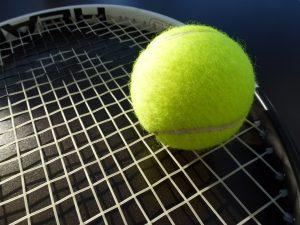We may earn money or products from the companies mentioned in this post.
Introduction to Cutting Tennis Balls for a Walker

Have you ever wondered why some people have tennis balls attached to the legs of their walkers? It may seem like an odd sight, but there are actually several good reasons for using tennis balls in this way In this article, we will explore the benefits of using tennis balls on walker legs and debunk some popular misconceptions surrounding their usage
Why use tennis balls on walker legs?
1
Improved mobility:
One of the main reasons people choose to attach tennis balls to their walker legs is to enhance mobility The smooth surface of the ball allows for easier maneuverability, especially on carpeted or uneven surfaces This simple modification can make a significant difference in one’s ability to move around with greater ease and comfort
2
Noise reduction:
Another advantage of using tennis balls is that they help reduce noise when the walker is in motion Without the cushioning provided by the balls, walkers can produce loud squeaking sounds that not only disrupt the user’s peace but also draw unnecessary attention By cutting a small slit into each ball and fitting them onto the walker legs, users can enjoy a quieter walking experience
3
Floor protection:
Walker legs can sometimes leave marks or scratches on delicate flooring surfaces like hardwood or tile Tennis balls act as protective buffers between the metal or plastic leg tips and the floor, preventing potential damage from occurring This feature is particularly beneficial for individuals who live in rental properties or nursing homes where floor maintenance is essential
Popular misconceptions about tennis ball usage on walkers
“Tennis ball usage on walkers is solely for elderly individuals”
This misconception assumes that only seniors require assistance with walkers In reality, people of all ages and abilities may benefit from using walkers, including individuals recovering from surgery or injury The use of tennis balls on walker legs is not limited to a particular age group; it simply serves as a practical modification for easier mobility
“Cutting tennis balls for walkers is complicated and time-consuming”
On the contrary, cutting tennis balls for walker legs is a quick and straightforward process With just a sharp knife or pair of scissors, you can easily create a small slit in each ball and slide them onto the walker legs This simple DIY solution takes only minutes to complete and offers long-lasting benefits
“Tennis ball usage on walkers is unprofessional or unattractive”
While some may consider the appearance of tennis balls on walkers unconventional, it’s important to prioritize functionality over aesthetics The purpose of attaching tennis balls is to improve mobility and protect flooring, not to conform to societal expectations However, if desired, there are alternative options available such as stylish rubber tips designed specifically for walker legs
In conclusion, the use of tennis balls on walker legs provides several advantages including improved mobility, noise reduction, and floor protection It’s essential to debunk misconceptions surrounding this practice and recognize that anyone can benefit from this simple yet effective modification So why not give it a try? Your walker will thank you!
Materials and Tools Needed for Cutting Tennis Balls

Choosing the right tennis balls
When it comes to cutting tennis balls, the first step is to choose the right ones for the job You have two options: new or used tennis balls New tennis balls are ideal if you want a clean cut and precise results They offer a firm texture that makes cutting easier and more efficient
If you’re working on a budget or have some old tennis balls lying around, using used tennis balls can be a cost-effective alternative However, keep in mind that their texture might be slightly different due to wear and tear, which can affect the final outcome of your project
Aside from considering whether to use new or used tennis balls, you should also think about size and brand considerations Different brands may have variations in material thickness and durability, so choose one that suits your needs best
Necessary tools for the job
-
Sharp knife or box cutter:
A sharp blade is essential for making clean cuts on the tennis ball surface Whether you prefer a knife or box cutter, make sure it’s sharp enough to glide through the material smoothly -
Scissors or shears:
In addition to a knife or box cutter, having scissors or shears handy can be useful for more delicate cuts or trimming any excess material after using the primary cutting tool -
Marker or pen for tracing:
To ensure accuracy while cutting, use a marker or pen to trace your desired shape onto the surface of the tennis ball before making any cuts -
Protective gloves:
Safety should always come first when handling sharp tools Wearing protective gloves will not only protect your hands from potential injuries but also provide better grip and control over the cutting process
Now that you have a clear understanding of the materials and tools needed for cutting tennis balls, you can confidently embark on your project Remember to prioritize safety, choose the right tennis balls, and use sharp tools for precise cuts With these essentials in hand, you’ll be well-equipped to tackle any tennis ball cutting task with ease!
Step-by-Step Process of Cutting Tennis Balls for a Walker

When it comes to enhancing the mobility and stability of a walker, attaching tennis balls to its legs can be a game-changer Not only do they provide smoother movement on various surfaces, but they also help protect your floors from scratches In this article, we’ll guide you through the step-by-step process of cutting tennis balls for your walker
Preparation Steps Before Cutting
Before diving into the cutting process, there are a couple of essential preparatory steps you need to take First, make sure to clean the legs of your walker thoroughly Removing any dirt or debris ensures that the tennis balls adhere properly and won’t slip off easily
The next step is to measure the diameter of each leg accurately This measurement will determine the size of the slit you need to make on the tennis ball later on
Once you have cleaned and measured all the legs, mark a clear cutting line on each tennis ball using a pen or marker This marking will serve as your guide during the cutting process
The Cutting Process
Now that you’ve completed the preparation steps let’s move on to the actual cutting process Start by creating an X-shaped slit on each tennis ball where you marked it earlier This X-shaped cut will allow you to insert each leg snugly into its respective ball while providing stability and preventing slippage
To achieve clean cuts, it’s important to use sharp scissors or utility knives specifically designed for this task Make sure to apply steady pressure while cutting and avoid rushing to maintain accuracy and precision
Safety should always be a top priority when handling sharp tools Wear protective gloves if necessary and keep your fingers away from blades during the cutting process It’s better to take your time and work carefully to prevent any accidents or injuries
If you find that the size of the slit is too tight or too loose for your walker legs, you can adjust it accordingly Simply trim a little more if the fit is too tight, or widen the slit slightly if it’s too loose The goal is to achieve a snug fit that ensures stability while using the walker
Attaching Tennis Balls to Walker Legs
With the cutting process complete, it’s time to attach the tennis balls to your walker legs Start by inserting each leg into its respective tennis ball through the X-shaped slit you created earlier Make sure they fit securely and sit firmly on top of each leg
To ensure proper functionality and longevity, regularly monitor the wear and tear of the tennis balls attached to your walker Over time, they may experience natural deterioration due to frequent use or different surfaces encountered during walks If you notice any signs of significant wear, consider replacing them to maintain optimal performance
Alternatives to Tennis Balls and Additional Tips

Other materials that can be used in place of tennis balls
If you’re looking for alternatives to tennis balls to use on your walker, there are a few options that can provide similar benefits One option is using furniture glides, which are small discs made of smooth material that attach to the bottom of your walker’s legs These glides not only reduce friction but also make it easier for your walker to glide smoothly across different surfaces
Another alternative is walker ski glides, which are designed specifically for walkers and can easily replace tennis balls These ski-like attachments fit securely onto the bottom of your walker’s legs and provide excellent maneuverability on various terrains They work especially well on carpeted areas or outdoor surfaces, ensuring a smooth walking experience
If you’re looking for a cost-effective option, rubber caps can be a great substitute for tennis balls These caps are typically made from durable rubber material and offer excellent grip and stability They provide added traction on slippery floors while reducing the noise produced by the walker as it moves
Additional tips for walker safety
In addition to finding suitable alternatives to tennis balls, there are some additional tips you can follow to ensure optimal safety while using your walker
-
Regularly inspecting your walker:
It’s essential to regularly check your walker for any signs of wear and tear Pay attention to loose screws, worn-out grips, or damaged parts that may compromise its stability or functionality By addressing these issues promptly, you can prevent accidents and maintain the longevity of your equipment -
Considering additional accessories, like grip covers:
To enhance comfort and grip while using your walker, consider investing in grip covers These covers can provide a softer and more ergonomic grip, reducing strain on your hands and improving overall stability They are usually made of foam or rubber materials and can be easily installed onto the handles of your walker
By implementing these alternatives to tennis balls and following these additional tips, you can ensure a safer and more comfortable walking experience with your walker
Useful Links

the Tennis Ball Cutter™
YUESHENG Pre-Cut Tennis Balls for Walkers – Heavy Duty …
TG Special Editions: Pre-cut Walker Tennis Ball Glides
How To Put Tennis Balls On A Walker – Safe Smart Seniors
Equate Walker Tennis Balls, 2 Count
how to cut tennis balls for walker
Walker With Tennis Balls
VIV 12 Pack Pre Cut Walker Tennis Ball Glides (Green …
11 Smart Uses for Old Tennis Balls | HowStuffWorks
Pre-cut Walker Tennis Ball Glides – Any Color – 1 Pair
Glides and Tennis Balls for Walkers | Walker Skis
Pre-Cut Tennis Balls for Walkers
Penco Blue Walkerballs :: blue tennis ball walker ball glides
Walker Tennis Ball Glides
AHS Walker Tennis Ball Glides | American Hospital Supply
pre cut tennis balls for sale






